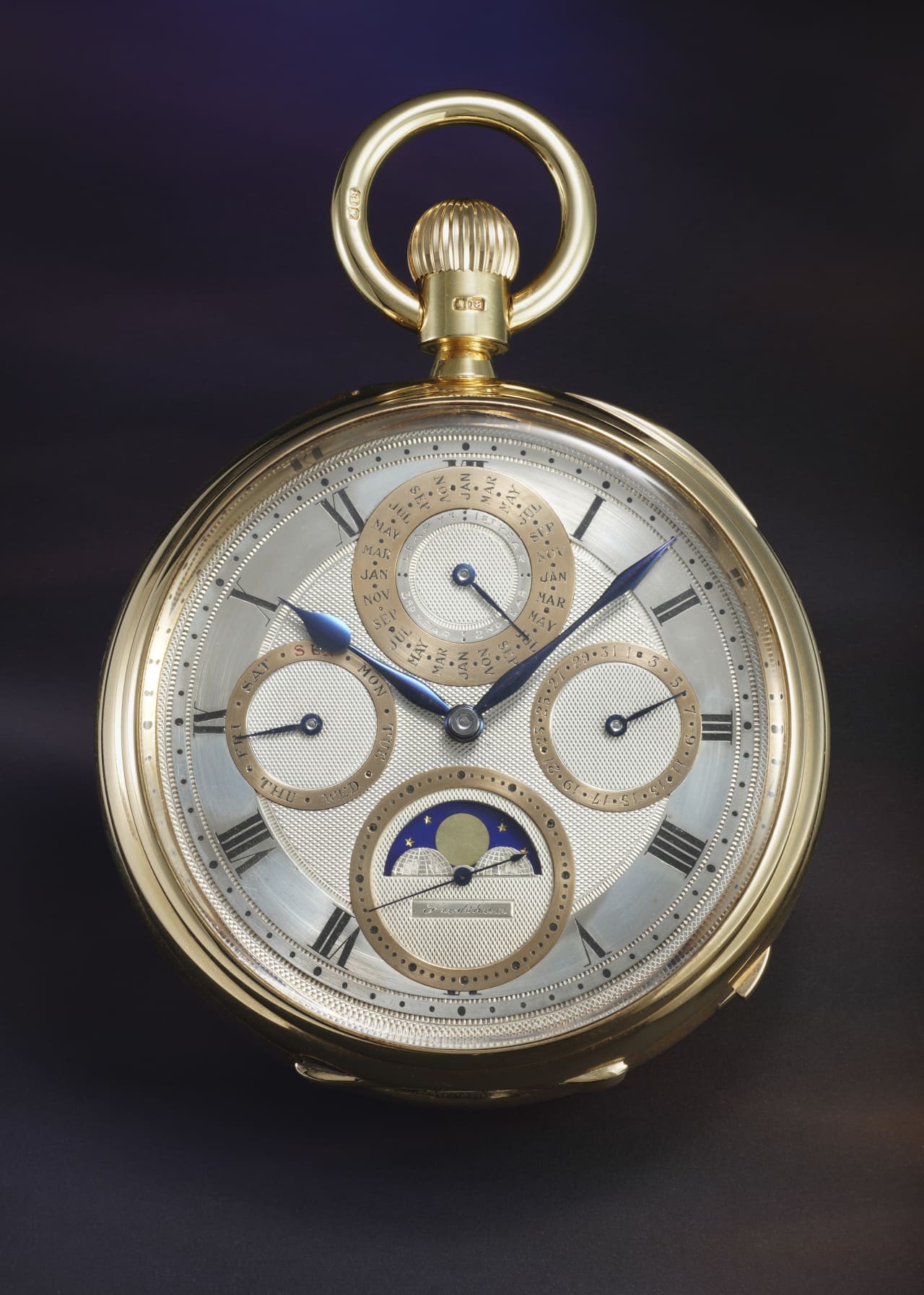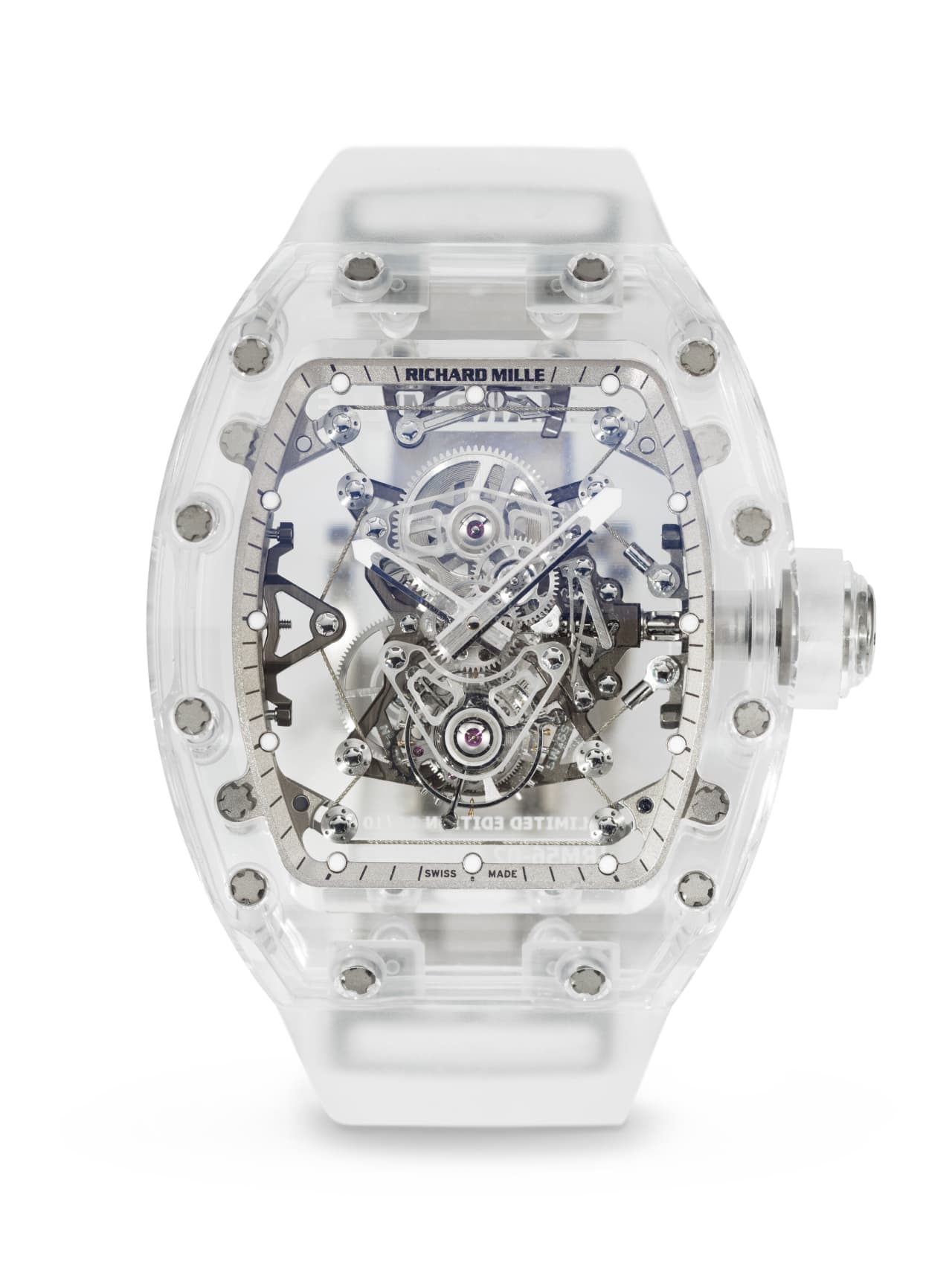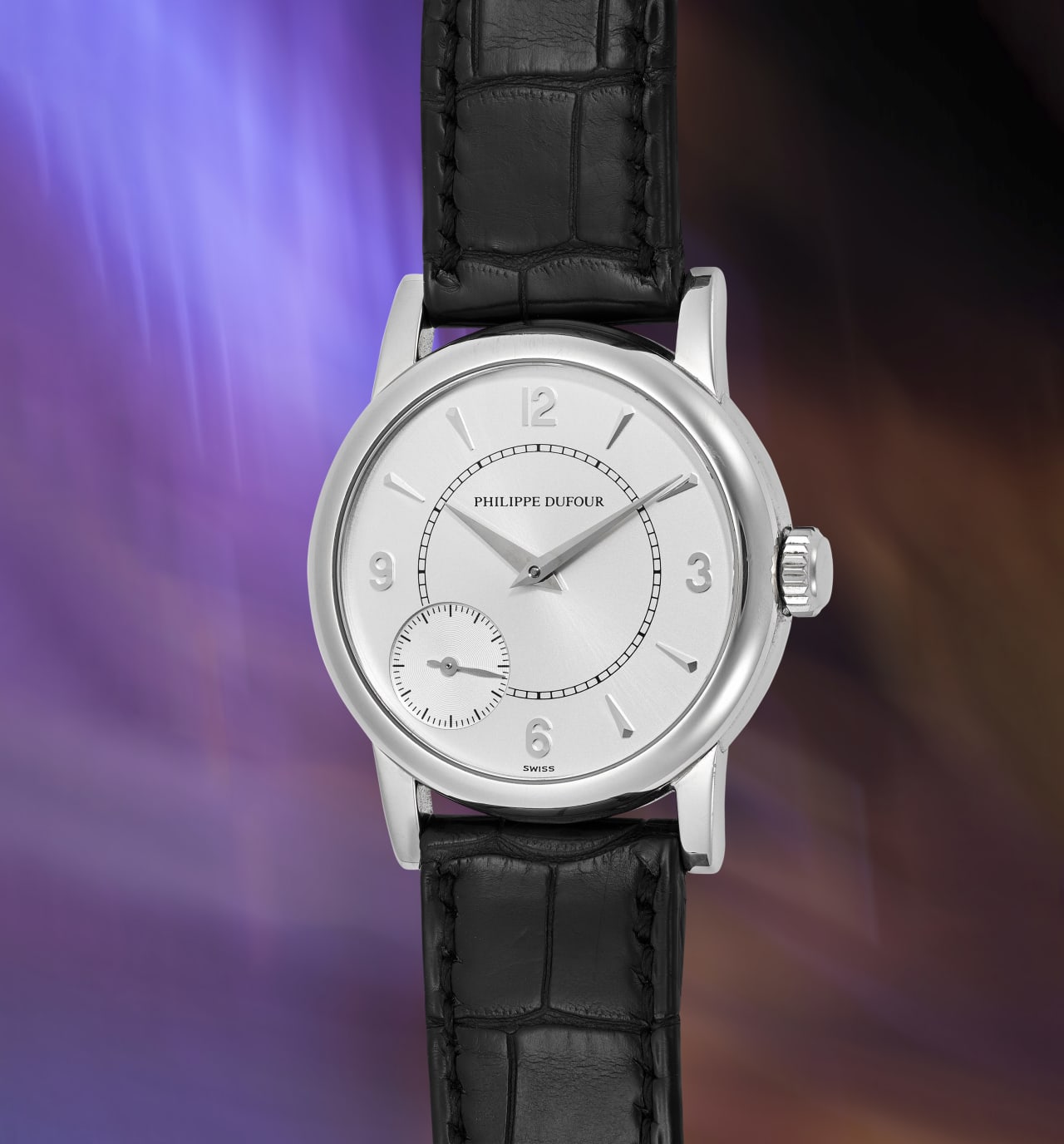New York Watch Auctions Record Uptick in Sales in the Face of Market Slowdown
Luxury watch collectors showed ongoing strong demand for Patek Philippe, growing interest in modern watches and a preference for larger case sizes and leather straps at the June watch sales in New York, according to an analysis of the major auctions.
Independent and neo-vintage categories, meanwhile, experienced declines in total sales and average prices, said the report from EveryWatch, a global online platform for watch information. Overall, the New York auctions achieved total sales of US$52.27 million, a 9.87% increase from the previous year, on the sale of 470 lots, reflecting a 37% increase in volume. Unsold rates ticked down a few points to 5.31%, according to the platform’s analysis.
EveryWatch gathered data from official auction results for sales held in New York from June 5 to 10 at Christie’s, Phillips, and Sotheby’s. Limited to watch sales exclusively, each auction’s data was reviewed and compiled for several categories, including total lots, sales and sold rates, highest prices achieved, performance against estimates, sales trends in case materials and sizes as well as dial colors, and more. The resulting analysis provides a detailed overview of market trends and performance.

“We still see a strong thirst for rare, interesting, and exceptional watches, modern and vintage alike, despite a little slow down in the market overall,” says Paul Altieri, founder and CEO of the California-based pre-owned online watch dealer BobsWatches.com, in an email. “The results show that there is still a lot of money floating around out there in the economy looking for quality assets.”
Patek Philippe came out on top with more than US$17.68 million on the sale of 122 lots. It also claimed the top lot: Sylvester Stallone’s Patek Philippe GrandMaster Chime 6300G-010, still in the sealed factory packaging, which sold at Sotheby’s for US$5.4 million, much to the dismay of the brand’s president, Thierry Stern . The London-based industry news website WatchPro estimates the flip made the actor as much as US$2 million in just a few years.

Richard Mille
“As we have seen before and again in the recent Sotheby’s sale, provenance can really drive prices higher than market value with regards to the Sylvester Stallone Panerai watches and his standard Patek Philippe Nautilus 5711/1a offered,” Altieri says.
Patek Philippe claimed half of the top 10 lots, while Rolex and Richard Mille claimed two each, and Philippe Dufour claimed the No. 3 slot with a 1999 Duality, which sold at Phillips for about US$2.1 million.
“In-line with EveryWatch’s observation of the market’s strong preference for strap watches, the top lot of our auction was a Philippe Dufour Duality,” says Paul Boutros, Phillips’ deputy chairman and head of watches, Americas, in an email. “The only known example with two dials and hand sets, and presented on a leather strap, it achieved a result of over US$2 million—well above its high estimate of US$1.6 million.”
In all, four watches surpassed the US$1 million mark, down from seven in 2023. At Christie’s, the top lot was a Richard Mille Limited Edition RM56-02 AO Tourbillon Sapphire, the most expensive watch sold at Christie’s in New York. That sale also saw a Richard Mille Limited Edition RM52-01 CA-FQ Tourbillon Skull Model go for US$1.26 million to an online buyer.
Rolex expert Altieri was surprised one of the brand’s timepieces did not crack the US$1 million threshold but notes that a rare Rolex Daytona 6239 in yellow gold with a “Paul Newman John Player Special” dial came close at US$952,500 in the Phillips sale.
The Crown did rank second in terms of brand clout, achieving sales of US$8.95 million with 110 lots. However, both Patek Philippe and Rolex experienced a sales decline by 8.55% and 2.46%, respectively. The independent brand Richard Mille, with US$6.71 million in sales, marked a 912% increase from the previous year with 15 lots, up from 5 lots in 2023.
The results underscored recent reports of prices falling on the secondary market for specific coveted models from Rolex, Patek Philippe, and Audemars Piguet. The summary points out that five top models produced high sales but with a fall in average prices.
The Rolex Daytona topped the list with 42 appearances, averaging US$132,053, a 41% average price decrease. Patek Philippe’s Nautilus, with two of the top five watches, made 26 appearances with an average price of US$111,198, a 26% average price decrease. Patek Philippe’s Perpetual Calendar followed with 23 appearances and a US$231,877 average price, signifying a fall of 43%, and Audemars Piguet’s Royal Oak had 22 appearances and an average price of US$105,673, a 10% decrease. The Rolex Day Date is the only watch in the top five that tracks an increase in average price, which at US$72,459 clocked a 92% increase over last year.
In terms of categories, modern watches (2005 and newer) led the market with US$30 million in total sales from 226 lots, representing a 53.54% increase in sales and a 3.78% increase in average sales price over 2023. Vintage watches (pre-1985) logged a modest 6.22% increase in total sales and an 89.89% increase in total lots to 169.
However, the average price was down across vintage, independent, and neo-vintage (1990-2005) watches. Independent brands saw sales fall 24.10% to US$8.47 million and average prices falling 42.17%, while neo-vintage watches experienced the largest decline in sales and lots, with total sales falling 44.7% to US$8.25 million, and average sales price falling 35.73% to US$111,000.
 Copyright 2020, Dow Jones & Company, Inc. All Rights Reserved Worldwide. LEARN MORE
Copyright 2020, Dow Jones & Company, Inc. All Rights Reserved Worldwide. LEARN MORE
This stylish family home combines a classic palette and finishes with a flexible floorplan
Just 55 minutes from Sydney, make this your creative getaway located in the majestic Hawkesbury region.
Impact investing is becoming more mainstream as larger, institutional asset owners drive more money into the sector, according to the nonprofit Global Impact Investing Network in New York.
In the GIIN’s State of the Market 2024 report, published late last month, researchers found that assets allocated to impact-investing strategies by repeat survey responders grew by a compound annual growth rate (CAGR) of 14% over the last five years.
These 71 responders to both the 2019 and 2024 surveys saw their total impact assets under management grow to US$249 billion this year from US$129 billion five years ago.
Medium- and large-size investors were largely responsible for the strong impact returns: Medium-size investors posted a median CAGR of 11% a year over the five-year period, and large-size investors posted a median CAGR of 14% a year.
Interestingly, the CAGR of assets held by small investors dropped by a median of 14% a year.
“When we drill down behind the compound annual growth of the assets that are being allocated to impact investing, it’s largely those larger investors that are actually driving it,” says Dean Hand, the GIIN’s chief research officer.
Overall, the GIIN surveyed 305 investors with a combined US$490 billion under management from 39 countries. Nearly three-quarters of the responders were investment managers, while 10% were foundations, and 3% were family offices. Development finance institutions, institutional asset owners, and companies represented most of the rest.
The majority of impact strategies are executed through private-equity, but public debt and equity have been the fastest-growing asset classes over the past five years, the report said. Public debt is growing at a CAGR of 32%, and public equity is growing at a CAGR of 19%. That compares to a CAGR of 17% for private equity and 7% for private debt.
According to the GIIN, the rise in public impact assets is being driven by larger investors, likely institutions.
Private equity has traditionally served as an ideal way to execute impact strategies, as it allows investors to select vehicles specifically designed to create a positive social or environmental impact by, for example, providing loans to smallholder farmers in Africa or by supporting fledging renewable energy technologies.
Future Returns: Preqin expects managers to rely on family offices, private banks, and individual investors for growth in the next six years
But today, institutional investors are looking across their portfolios—encompassing both private and public assets—to achieve their impact goals.
“Institutional asset owners are saying, ‘In the interests of our ultimate beneficiaries, we probably need to start driving these strategies across our assets,’” Hand says. Instead of carving out a dedicated impact strategy, these investors are taking “a holistic portfolio approach.”
An institutional manager may want to address issues such as climate change, healthcare costs, and local economic growth so it can support a better quality of life for its beneficiaries.
To achieve these goals, the manager could invest across a range of private debt, private equity, and real estate.
But the public markets offer opportunities, too. Using public debt, a manager could, for example, invest in green bonds, regional bank bonds, or healthcare social bonds. In public equity, it could invest in green-power storage technologies, minority-focused real-estate trusts, and in pharmaceutical and medical-care company stocks with the aim of influencing them to lower the costs of care, according to an example the GIIN lays out in a separate report on institutional strategies.
Influencing companies to act in the best interests of society and the environment is increasingly being done through such shareholder advocacy, either directly through ownership in individual stocks or through fund vehicles.
“They’re trying to move their portfolio companies to actually solving some of the challenges that exist,” Hand says.
Although the rate of growth in public strategies for impact is brisk, among survey respondents investments in public debt totaled only 12% of assets and just 7% in public equity. Private equity, however, grabs 43% of these investors’ assets.
Within private equity, Hand also discerns more evidence of maturity in the impact sector. That’s because more impact-oriented asset owners invest in mature and growth-stage companies, which are favored by larger asset owners that have more substantial assets to put to work.
The GIIN State of the Market report also found that impact asset owners are largely happy with both the financial performance and impact results of their holdings.
About three-quarters of those surveyed were seeking risk-adjusted, market-rate returns, although foundations were an exception as 68% sought below-market returns, the report said. Overall, 86% reported their investments were performing in line or above their expectations—even when their targets were not met—and 90% said the same for their impact returns.
Private-equity posted the strongest results, returning 17% on average, although that was less than the 19% targeted return. By contrast, public equity returned 11%, above a 10% target.
The fact some asset classes over performed and others underperformed, shows that “normal economic forces are at play in the market,” Hand says.
Although investors are satisfied with their impact performance, they are still dealing with a fragmented approach for measuring it, the report said. “Despite this, over two-thirds of investors are incorporating impact criteria into their investment governance documents, signalling a significant shift toward formalising impact considerations in decision-making processes,” it said.
Also, more investors are getting third-party verification of their results, which strengthens their accountability in the market.
“The satisfaction with performance is nice to see,” Hand says. “But we do need to see more about what’s happening in terms of investors being able to actually track both the impact performance in real terms as well as the financial performance in real terms.”
This stylish family home combines a classic palette and finishes with a flexible floorplan
Just 55 minutes from Sydney, make this your creative getaway located in the majestic Hawkesbury region.






















